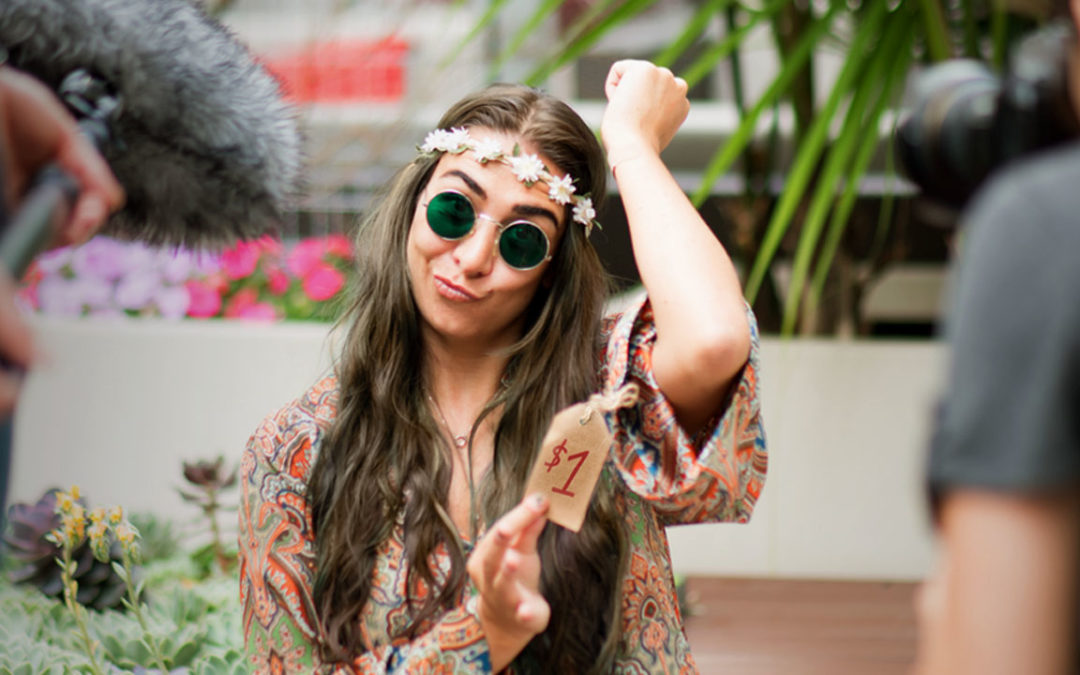Your script has it all: action, romance, and a killer twist. It’s dynamite! Best of all, there are only a couple characters and locations, so you might be able to pull it off on a low budget.
There’s just one problem. The story isn’t set in the present day.
The period piece, bane of indie filmmaking! Finding or fabricating authentic costumes, props, and locations can wreak havoc on your budget. But with a little creativity and the right mindset, your film can effectively portray the past without breaking the bank.
1. Shoot in a controlled environment
Stay indoors whenever possible. It’ll be easier to find and/or dress an old-fashioned living room than an entire city block. Couches, tables, and lamps will be less expensive to procure than Model T’s or gas streetlights. Rewrite some of the scenes in your script if you need to, but limit your locations to places where you have complete control. If shooting inside proves difficult, seek exteriors with no traffic and no tell-tale signs of human intervention. Forests, deserts, and beaches are all great timeless options that won’t cost an arm and a leg.
2. Splurge on a few critical elements
A few key props can make a huge difference in evoking another era. If you only have a little bit of money, make sure you spend it on something that will really sell the period. Comb the thrift stores for vintage items, make nice with prop houses, and crowd-source amongst your friends and family (especially those hoarders and pack rats). That 1964 Chevy Nova, 1974 8-Track Player, or 1984 Macintosh might just be a phone call or facebook post away. And don’t forget the power of Ebay and Offer Up. If you end up buying a cool prop, you can always re-sell it!
3. Do your homework
All the production design in the world won’t make up for dialogue that doesn’t ring true to the era. Spend some time developing a keen understanding of the the historical context in which your characters live. Reading books or newspaper articles from your chosen era will give you a window into the common vernacular of that time. Google’s Ngram viewer is a great tool to determine the popularity of a specific word or idiom in literature throughout history. You should know the music and art that was popular, common turns-of-phrase, and hand gestures that did or didn’t exist at the time (no high-fives before 1977!). Getting those details right will make your script, characters, and sets come to life — and the only thing it will cost you is time.
4. Get thrifty!
One of the most important and obvious details to consider when making a period piece is fashion. A bouncy ponytail and a poodle skirt can go a long way when it comes to the authenticity of the era. But truly vintage costumes can be expensive to rent, and most costume houses require you to have costly insurance. Next stop: thrift stores! Identify some vintage patterns and styles, then go on the hunt to dress your whole cast (including extras!). Most thrift stores cycle through massive discounts using different colored tags. Once you’ve found the items you like, take note of the tag and ask the employees when that particular color is going to be on sale. This also works for furniture, old electronics, wall decorations, and dishware.
5. Use the post-production process to your advantage
Professional quality VFX might be out of your price range, but there are plenty of accessible (and affordable) post-production features that you can use to accentuate the period of your film. Filters and color adjustment settings built directly into your NLE (Premiere, Avid, Final Cut, etc.) make vintage color adjustments (such as black & white or sepia) easy. Try Premiere Pro’s lens flare effect (very 1970’s!) or Final Cut’s “Bad TV” filter for a retro look. Additionally, if you plan ahead and compose your shots accordingly, you can add a matte to evoke a frame that was popular at a certain time period.
Removing contemporary objects in post is getting easier and cheaper as well. It might seem complicated, but you don’t have to be an artist or computer wiz to remove a telephone pole or a smoke detector with After Effects. Practice and preparation are the key. When possible use a locked down camera on any shots where you anticipate needing VFX. And don’t wait until after you shoot to try out your tools. Doing test shoots during pre-production will let you practice your technique and avoid costly mistakes on the big day!
Make each choice carefully, and don’t forget — it’s the story and the characters that make the film, not all the add-ons. The whole point is to create a world so believable that the characters are the audience’s only focus.

